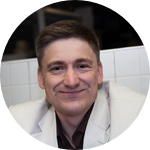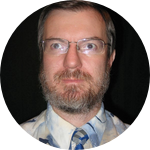About This Project
We hypothesize that information obtained with a handheld skin scanner device can be analyzed to detect skin cancer with at least 90% accuracy and less that 5% false positives. To test this we will build a device that illuminates the skin with light wavelengths specifically attuned to various types of subdermal tissues. Light returning from the skin to photodetectors will provide information that will allow lesion detection by novel tomographic reconstruction and machine learning techniques.
Ask the Scientists
Join The DiscussionWhat is the context of this research?
Melanoma is a dangerous form of the skin cancer responsible for thousands of deaths every year. Early detection of melanoma is often done through visual inspection of pigmented lesions over the skin. However, visual inspection alone has limited and variable accuracy that can result in a patient undergoing a series of biopsies. Ongoing research aims to improve diagnosis using instruments that probe below the skin surface and analysis techniques that can discern more than the human eye.
We believe that there are opportunities for improving the state of the art of skin cancer detection. Our team brings wide expertise in image reconstruction, tomography, and machine learning that we believe can make significant and novel contributions.
What is the significance of this project?
The World Health Organization (WHO) reports a rapid increase of skin cancer cases.
In cases where early detection of skin cancer melanoma is achieved, the cost of treatment, usually a simple excision of the affected skin, is low and a five year survival rate of 95% is reported. The treatment of advance cases of melanoma is much more expensive and the five year survival rate is only 13%. Early detection of skin cancer melanoma is therefore crucially important.
We predict that our economical and convenient device will provide a
reliable early warning and greatly reduce the rate of serious outcomes
of this disease. We believe that our device will provide the early
warning that leads to more numerous favorable outcomes.
What are the goals of the project?
We will build a handheld device consisting of arrays of LEDs that emit
light into the skin at wavelengths attuned to the optical properties of
various types of skin tissues. Complementary photodetectors will register light photons emerging from the skin. These light patterns will be the raw data for the tomography and machine learning algorithms.
To test the device on live data, a medical facility will be brought into the picture. For example, a similar project conducted a pilot study at a clinic involving the cooperation of the medical staff and patients. Standard statistical methods will be used to validate the device. A detection accuracy of more than 90% with less than 5% false positives are the success criteria.
Budget
We need to sub-contract the device construction as we do not have the resources to do this ourselves. Once we have a working device, we can continue to test its performance. We anticipate that most of the complexity will be in the algorithms that process the output of the device.
The device is actually fairly simple, consisting of a set of light sources of various wavelengths and intensities and complementary light detectors. These are all standard components that can be commercially purchased for less than $1000 US, judging from similar devices.
We expect that bulk of the expense will be labor costs for the device fabrication, which is difficult to estimate. We have identified possible fabrication sources.
It is also difficult to estimate costs associated with medical facilities in order to test the device. However, the literature would seem to indicate that this will not be a significant financial obstacle.
Endorsed by
 Project Timeline
Project Timeline
There are two main milestones: (1) Obtain datasets of skin scans from third parties to analyze using algorithms that we invent or adapt. This will establish both the the feasibility of the device and the specifications for its construction. (2) Build the device, using it to obtain additional data and refine the algorithms.
Mar 02, 2020
Project Launched
May 15, 2020
Obtain skin scan datasets from third parties.
Jul 01, 2020
Analysis algorithms and methods applied to the datasets.
Aug 01, 2020
Determine the viability and optimal specifications for the device. Communicate results to backers.
Sep 01, 2020
Solicit fabrication vendor contracts (cost and timelines). Contract with selected vendor.
Meet the Team
Affiliates
Affiliates
Team Bio
Once we have working hardware, we are confident our team has the expertise in tomography and machine learning to make a significant contribution to the diagnosis of skin cancer.
Tom Portegys
I'm happy to be coordinating this project, which has been a long-time goal of Dick Gordon. I think the team has the skills to make a real difference in improving skin cancer diagnostics. I work in machine learning, artificial neural networks and data science. I'm a senior contributor to the OpenWorm project (openworm.org) on a variety of projects related to computational biology. Research web page: tom.portegys.com/research.html
Vitaly Vlasov
I have an M.Sc. in Applied Mathematics, and work on image reconstruction and pattern recognition. I've developed a number of effective reconstruction algorithms for artifact preventive few-view computed tomography, which use state-of-the-art processing technologies such as compressed sensing and deep learning.
Richard Gorrdon
I woke up one morning in the early 1980s, realizing that I could look into my skin with a microscope to see the 3D structure of a beauty spot (nevus). I tried it on myself, and it worked. About one in 100,000 nevi turn into a cancer called melanoma. Thus the first 3D nevoscope was prototyped. Nowadays, with faster computers and advanced digital cameras that replace microscopes, my dream of detecting melanoma before it spreads (metastasizes) is possible. With my excellent collaborators, we hope to make home skin scanning a reality.
I was a professor at the University of Manitoba in Winnipeg, Canada from 1978-2011. I’m now “retired”, collaborating with mostly younger scientists around the world, volunteer as a scientist for the Gulf Specimen Marine Laboratory in Panacea, Florida, and hold an adjunct position in the Department of Obstetrics & Gynecology at Wayne State University. I wrote the first paper on diatom nanotechnology founding that field and started adaptive image processing. I’ve published on algal biofuels, computed tomography algorithms, AIDS prevention, neural tube defects, embryo physics, astrobiology and research and social ethics. I’m also Book Series Editor of: Diatoms: Biology & Applications and Astrobiology Perspectives on Life of the Universe (Wiley-Scrivener), and an Associate Editor of the science journal BioSystems.
Susan J Crawford-Young
My background is in Electrical and Computer Engineering with a strong side bar of Biology specialising in Embryology. I currently teach at Red River College in Manitoba Canada and I am working on a PhD in Biomedical Engineering with a specialty in Optics.
Alexander B Konovalov
I have a Ph.D. in Biophysics, and have worked on image reconstruction more than 20 years with more than 100 manuscripts (publications and technical reports) in this area. My work has been pivotal in few-view computed tomography and diffuse optical tomography, for which I have developed models and methods for solving both the forward and inverse problems.
Steve McGrew
I love learning, inventing, making things happen, and teaching. Specific interests are optics, computational photography, image processing, evolution, watercolor, blacksmithing, knifemaking, and wooden boat building.
Retired in 2017; currently staying very busy consulting, building a sailboat, and teaching blacksmithing & knifemaking.
Lab Notes
Nothing posted yet.
Additional Information
We have a US provisional patent on the device: Application Number: 62/820,844, Filing Date: 3/19/2019 dialectek.com/SkinVue/SkinVue_provisional_patent.pdf.
Project Backers
- 19Backers
- 13%Funded
- $632Total Donations
- $33.26Average Donation






